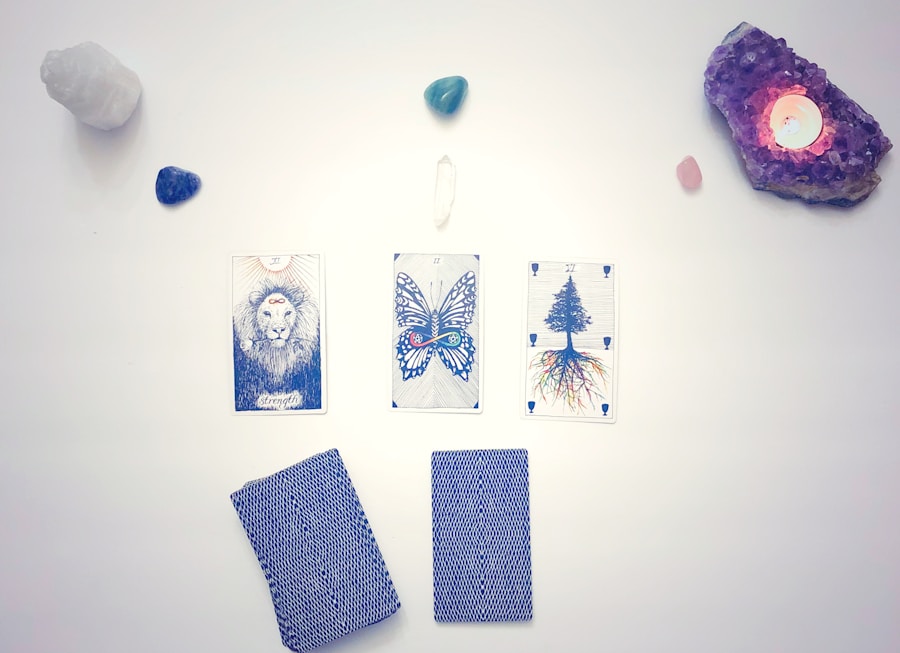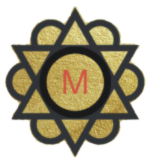
The relationship between tarot and dreams is a fascinating intersection of intuition, symbolism, and personal insight. Both tarot cards and dreams serve as conduits for the subconscious mind, offering glimpses into our inner thoughts, fears, and desires. Dreams often present us with vivid imagery and narratives that can be perplexing or enlightening, while tarot cards provide a structured framework for interpreting these subconscious messages.
The act of drawing tarot cards can be seen as a way to tap into the same intuitive wellspring that fuels our dreams, allowing us to explore the deeper meanings behind our nightly visions. In many cultures, dreams have been regarded as prophetic or as messages from the divine. Similarly, tarot has long been used as a tool for divination, providing guidance and insight into various aspects of life.
When combined, these two practices can enhance one another, creating a rich tapestry of understanding. For instance, a dream may present a scenario that feels unresolved or confusing, and drawing tarot cards afterward can help clarify the emotions or situations at play. This synergy allows individuals to delve deeper into their psyche, uncovering layers of meaning that may not be immediately apparent in either practice alone.
Key Takeaways
- Tarot and dreams are connected through their ability to tap into the subconscious mind and provide insight into our inner thoughts and emotions.
- To incorporate tarot into your dream practice, consider pulling a card before bed to set an intention for your dreams or using tarot cards to interpret and reflect on your dreams upon waking.
- Understanding the symbolism of tarot cards in dreams can help you uncover hidden meanings and messages from your subconscious mind.
- When interpreting tarot cards in your sleep, pay attention to the emotions and feelings associated with the cards, as well as any personal connections or experiences that come to mind.
- Common tarot card meanings in dreams include the Fool representing new beginnings, the High Priestess symbolizing intuition and inner wisdom, and the Tower signifying sudden change or upheaval in your life.
- Utilize tarot for dream journaling and self-reflection by recording your dreams and pulling a tarot card to gain further insight and understanding into the messages from your subconscious mind.
How to Incorporate Tarot into Your Dream Practice
Establishing a Nightly Ritual
One effective method is to establish a nightly ritual where you draw a tarot card before going to sleep. This card can serve as a focal point for your dreams, guiding your subconscious mind toward specific themes or questions. For example, if you draw The Fool, you might invite dreams that encourage exploration and new beginnings, while The Tower could prompt you to confront upheaval or transformation in your life.
Reflecting on Your Dreams
Another approach is to keep a tarot deck beside your bed or in your dream journal. Upon waking, you can draw a card to reflect on the dream you just experienced. This practice not only helps in recalling the dream but also provides a framework for interpretation.
Gaining Deeper Insights
By associating the imagery and emotions from your dream with the symbolism of the drawn card, you can gain insights that may not have been accessible through dream analysis alone. This method encourages a dialogue between your conscious and subconscious mind, fostering a deeper connection to both realms.
Understanding the Symbolism of Tarot Cards in Dreams

The symbolism inherent in tarot cards can enrich the interpretation of dreams by providing a lexicon of archetypes and themes that resonate on multiple levels.
For instance, the appearance of The Empress in a dream may symbolize fertility, creativity, or nurturing energy, prompting the dreamer to explore these aspects in their waking life.
Conversely, encountering The Devil could indicate feelings of entrapment or temptation that require examination. Moreover, the context in which tarot cards appear in dreams can significantly alter their meanings. A card that typically represents positive energy might take on a more cautionary tone if it appears in a nightmarish scenario.
For example, The Sun is often associated with joy and success; however, if it appears during a dream filled with anxiety or darkness, it may suggest that the dreamer is struggling to find light amidst challenges. Understanding these nuances allows for a more comprehensive interpretation of both the dream and the tarot card’s symbolism.
Tips for Interpreting Tarot Cards in Your Sleep
Interpreting tarot cards that appear in dreams requires a blend of intuition, knowledge of card meanings, and an understanding of personal associations. One effective strategy is to maintain an open mind and allow your intuition to guide you. When you wake from a dream featuring tarot imagery, take a moment to jot down your immediate feelings and thoughts about the card before consulting any reference materials.
This initial reaction often reveals personal insights that are crucial for interpretation. Additionally, consider the emotions experienced during the dream as they relate to the card’s symbolism. For instance, if you dream of The Lovers while feeling conflicted or anxious about a relationship, this may indicate underlying issues that need addressing.
Conversely, if you feel elated upon encountering The Star in your dream, it could signify hope and inspiration in your waking life. By paying attention to both the card’s traditional meanings and your emotional responses, you can create a more nuanced interpretation that resonates with your personal journey.
Common Tarot Card Meanings in Dreams
Certain tarot cards frequently appear in dreams and carry specific meanings that can provide valuable insights into the dreamer’s psyche. The High Priestess, for example, often symbolizes intuition and hidden knowledge. When this card appears in a dream, it may suggest that the dreamer is being called to trust their instincts or explore their inner wisdom more deeply.
This card encourages introspection and may indicate that answers lie within rather than outside. Another common card is The Chariot, which represents determination and willpower. Dreaming of this card may reflect the dreamer’s desire to overcome obstacles or assert control over their life circumstances.
It can serve as a reminder to harness one’s inner strength and focus on goals with confidence. In contrast, The Hanged Man often signifies surrender or letting go. If this card appears in a dream context where the dreamer feels stuck or immobilized, it may indicate the need for patience and acceptance of current circumstances before moving forward.
Using Tarot for Dream Journaling and Self-Reflection

Uncovering Hidden Themes
For instance, if you had a dream about conflict with a friend, drawing The Five of Wands could highlight themes of competition or disagreement that are relevant to your waking relationships. Moreover, using tarot cards as prompts for self-reflection can lead to profound insights over time.
Revealing Patterns and Areas for Growth
By regularly engaging with both your dreams and tarot readings, you create a feedback loop that fosters awareness of patterns in your life. You might notice recurring themes in your dreams that align with specific cards drawn during readings, revealing areas where growth is needed or where healing can occur.
Empowering Self-Discovery and Transformation
This ongoing dialogue between dreams and tarot not only enhances self-awareness but also empowers individuals to navigate their lives with greater clarity and purpose. By incorporating tarot into dream practices, individuals can unlock deeper meanings behind their nightly visions while fostering personal growth through self-reflection and journaling.
If you are interested in delving deeper into the world of tarot and its symbolism, you may also enjoy reading about the Numerology of Number 3: Birthday Number and Life Path Number. This article explores the significance of the number 3 in numerology and how it can influence your life path and personality traits. By understanding the connections between tarot cards and numerology, you can gain a more comprehensive understanding of yourself and the world around you. Check out the article here for more insights.
FAQs
What is tarot?
Tarot is a form of divination that uses a deck of cards to gain insight into past, present, and future events. Each card in the deck holds symbolic meaning and can be interpreted in various ways.
How is tarot used for dream interpretation?
Tarot can be used to interpret dreams by drawing a card that represents the dream or the emotions and themes within the dream. The symbolism of the card can provide insight into the meaning of the dream.
Can tarot cards be interpreted in dreams?
Yes, tarot cards can appear in dreams and their symbolism can be interpreted just like any other dream symbol. The appearance of a specific tarot card in a dream can hold significance and provide insight into the dreamer’s subconscious thoughts and emotions.
Is it common to dream about tarot cards?
Dreaming about tarot cards is not uncommon, especially for individuals who regularly use tarot for self-reflection and introspection. The appearance of tarot cards in dreams can be a reflection of the dreamer’s interest in spirituality, intuition, and self-discovery.
How can I use tarot for dream interpretation?
To use tarot for dream interpretation, you can draw a card that represents the overall theme or emotions of the dream. Then, you can explore the symbolism and meaning of the card to gain insight into the messages and lessons within the dream.






